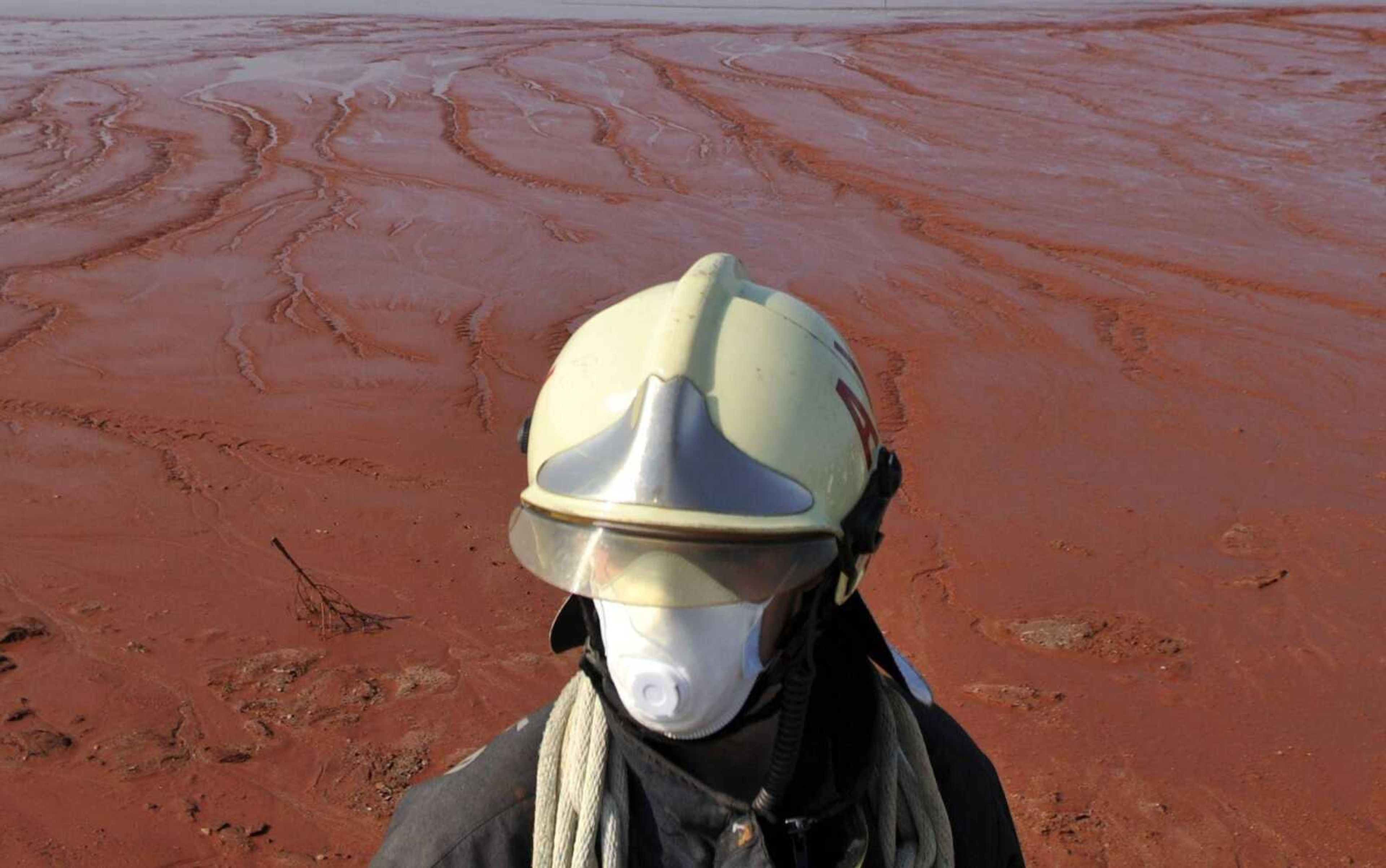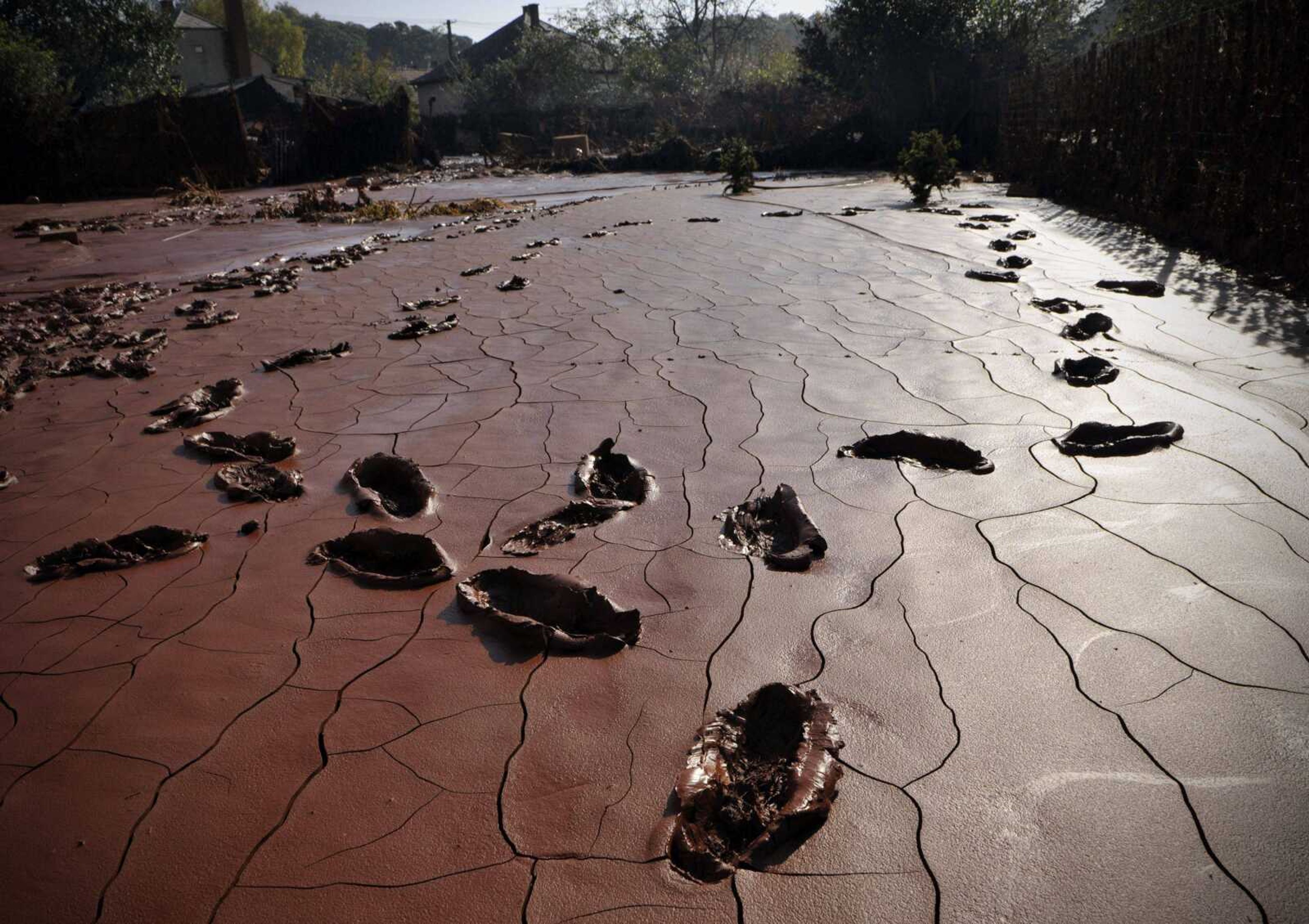Communism left toxic legacy in Eastern Europe
BUCHAREST, Romania -- Abandoned mines in Romania leach waters contaminated by heavy metals into rivers. A Hungarian chemical plant produces more than 100,000 tons of toxic substances a year. Soil in eastern Slovakia is contaminated with cancer-producing PCBs...
BUCHAREST, Romania -- Abandoned mines in Romania leach waters contaminated by heavy metals into rivers. A Hungarian chemical plant produces more than 100,000 tons of toxic substances a year. Soil in eastern Slovakia is contaminated with cancer-producing PCBs.
The flood of toxic sludge in Hungary is but one of the ecological horrors that lurk in Eastern Europe 20 years after the collapse of the Iron Curtain, serving as a reminder that the region is dotted with disasters waiting to happen.
Much of Eastern Europe is free of many of its worst environmental sins with the help of Western funds and conditions imposed on Hungary, Romania, Bulgaria, Slovakia and the Czech Republic in exchange for membership in the European Union.
Still, the sludge has focused attention on less-visible dangers that survived various cleanups in the region.
The caustic spill -- Hungary's worst ecological disaster -- also has raised questions about whether investors who took over Soviet-era factories from the state 20 years ago are at fault for not spending enough on safety.

Eight people died in the Oct. 4 deluge of red sludge from a 24-acre storage pool where a byproduct of aluminum production is kept.
Calls for greater cleanup efforts apply not only to Hungary, but also to neighbors like Serbia that hope to join the 27-nation EU.
"The scary thing is we didn't know this existed and there could be other ones," said Andreas Beckmann, director of the World Wildlife Fund Danube-Carpathian program, alluding to the Hungarian spill. "How many other facilities and sites are there that could be a ticking time bomb?"
Environmentalists warn of potential problems from seven storage ponds about 60 miles northwest of Budapest that hold 12 million tons of sludge -- more than 10 times the amount that spilled this week.
"If the gates break there, much of Hungary's drinking water would be endangered," WWF official Martin Geiger said.
Other sites -- like the Borsodchem plant in northeastern Hungary -- pose similar risks to groundwater. That factory churns out 100,000 tons of the toxin PVC that contains dioxin, the same poison released into the air by a factory explosion in Seveso, Italy 34 years ago that killed hundreds of animals and turned much of the town into a no man's land.
Slovakia, Hungary's northern neighbor, has its own toxic problems, including a huge area in the east of the country that is still contaminated with PCBs from communist times.
Government officials in Bulgaria, alarmed by the Hungarian spill, have ordered safety checks of a dozen waste dams -- huge reservoir walls that hold back often heavy metal-laden waste that are prone to leaks or collapse.
In Bulgaria's most serious such accident, walls at a lead and copper processing factory in Zgorigrad broke in 1966, releasing a flood of sludge that killed 488 people and left much of the immediate area uninhabitable.
Activists say smaller leaks are not uncommon. Ecologist Daniel Popov says sludge from a storage pond containing waste from copper ore leaked into the Topolnitsa River in central Bulgaria last spring, killing fish.
The inspections are only for operational waste dams, prompting criticism from environmental activists.
Of particular concern, a WWF report says, is a dam near the town of Chiprovtsi in northwestern Bulgaria because it is directly on the Ogosta River, a major Danube tributary.
Hungary's sludge ponds are a legacy of the Soviet era, when Moscow designated that country as the main producer of alumina, used in the manufacture of aluminum. Reservoirs full of heavy metal-laced sludge are also a threat elsewhere.
A huge storage pond full of corrosive sludge in Romania is part of the landscape of the gritty Danube port of Tulcea. WWF activists say leaks and airborne pollution from the site is responsible for fish and bird deaths nearby.
The Danube -- Europe's second-longest waterway -- appears to have escaped immediate harm from the recent Hungarian spill. The same kind of spill at the Tulcea plant would devastate a vast stretch of lakes and marshes at the Danube's entry into the Black Sea that has been designated a UNESCO World Heritage site. It hosts more than 300 species of birds and 45 freshwater species of fish.
Memories of an environmental disaster a decade ago in Romania have triggered emergency measures for Tulcea and other suspect sites. That's when a reservoir burst at a gold mine in the northwestern town of Baia Mare on Jan. 30, 2000, spilling cyanide-laden water into local rivers and killing tons of fish and other wildlife.
Romanian Environment Minister Laszlo Borbely said Friday his country is accelerating cleanup plans for 1,000 contaminated sites.
"We must be very cautious now after what happened here in Baia Mare and now in Hungary," he said. Romania could access up to 100 million euros ($138 million) in EU funds to decontaminate polluted sites, he said.
Some of Eastern Europe's worst environmental horrors were in Romania -- among them Copsa Mica, where TV images of black toxic soot from chimneys of a rubber-dye factory falling onto houses, fields, grazing sheep and townspeople shocked the world in 1989.
International outrage contributed to the plant's 1993 closure. But "historic pollution" with heavy metals from the 40 years that it operated continues to foul the air. Life expectancy in the area is nine years lower than the national average of 72.
The Danube is shared by seven countries, and it has been the victim of toxic spills even before Hungary's caustic red muck.
Among the worst incidents came 11 years ago during NATO's bombing of Serbia, when warplanes targeted fertilizer and vinyl chloride manufacturing plants and an oil refinery in the town of Pancevo, near Belgrade, releasing mercury, dioxins and other deadly compounds into the river.
Foreign funding after the war allowed authorities to contain some of the leaks, but sporadic emissions of toxic gases continue to drive air pollution above accepted levels.
Also near Belgrade, an open pit in Obrenovac just 100 meters (yards) from the Sava -- a Danube tributary -- contains millions of tons of coal ash from the Nikola Tesla Coal Power Plant. The air has unhealthy levels of carbon black, also known as lampblack, for as much as a third of the year. Sprinklers to prevent the ash from becoming airborne are of limited effectiveness on windy days.
Croatia lists nine locations where dangerous waste has been deposited for decades that still need to be cleaned, said Toni Vidan of the group Green Action.
In Vranjic near Split, a factory producing asbestos closed several years ago, but the waste -- about 7,000 cubic meters (9,100 cubic yards) of material mixed with asbestos -- hasn't been completely cleaned up. Two years ago, the presence of asbestos in Vranjic was three times greater than allowed. Even today, residents say particles of asbestos are in the air when the wind blows.
------
Associated Press writers Veselin Toshkov in Sofia, Bulgaria, Dusan Stojanovic in Belgrade, Serbia, Karel Janicek in the Czech Republic and Alina Wolfe Murray in Bucharest, Romania, contributed to this report. Jahn reported from Vienna.
Connect with the Southeast Missourian Newsroom:
For corrections to this story or other insights for the editor, click here. To submit a letter to the editor, click here. To learn about the Southeast Missourian’s AI Policy, click here.










